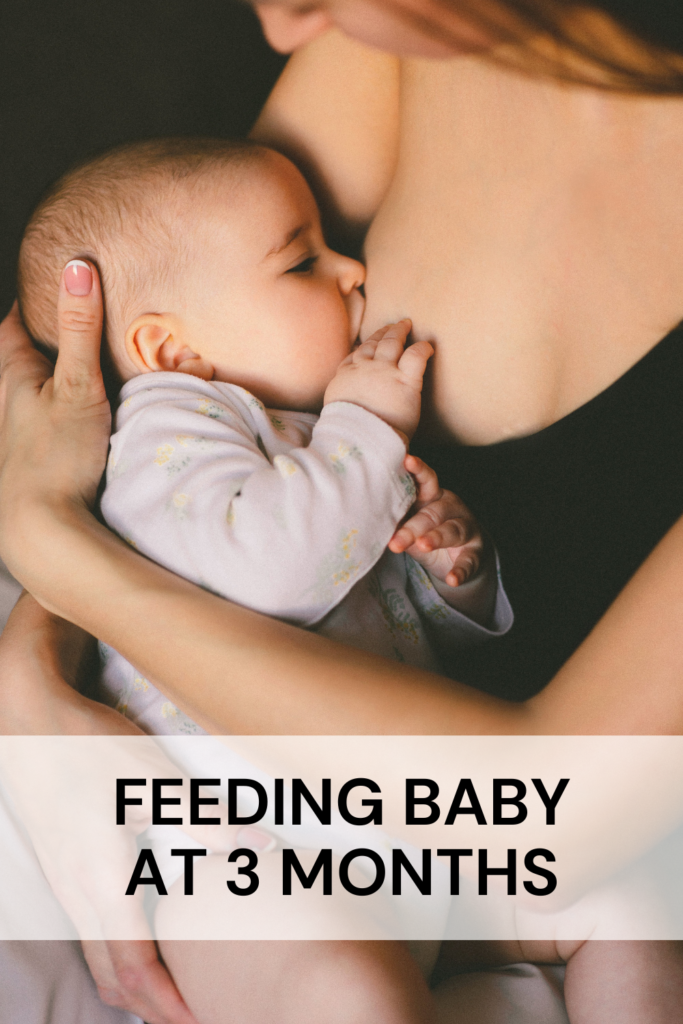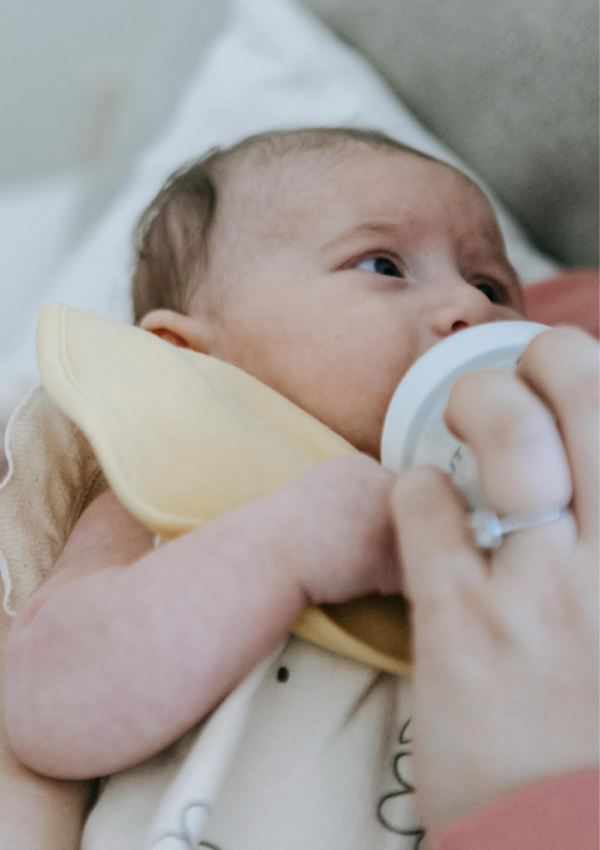Is a 3-month-old baby old enough to eat solids? This post is about feeding your baby at 3 months of age.
DISCLOSURE This post may contain affiliate links, meaning if you decide to make a purchase via my links, I will earn a commission at no extra cost to you. As an Amazon Associate I earn from qualifying purchases. Thank you for your support.
Disclaimer: The information provided in this blog post is for educational purposes only and should not be used as a substitute for professional medical advice, diagnosis, or treatment. Always seek the guidance of your pediatrician or qualified healthcare provider with any questions you may have regarding your child’s health. If you think your child may have a medical emergency, call your doctor or emergency services immediately. Read our full Medical Disclaimer here.
Feeding a baby at 3 months is continuing to make milk feedings fun, calm, and nutritious. Your little one is likely going through major changes at 3 months old. As your developing baby starts staying awake for longer stretches and becoming more alert and interactive during feeding and play time, you’ll get to know him/her better through babbling conversations and snuggles!
At 3 months, your baby still exclusively drinks breast milk or formula. Their digestive system cannot handle solid foods yet. While their stomach capacity is still small, they need milk’s calories and nutrients to fuel growth spurts and development. As such, breast milk or formula will remain the sole source of nutrition for at least 4 months or as advised by your pediatrician based on the baby’s readiness. Babies at 3 months will eat 4 to 5 times a day about 6 to 7 ounces of milk.
In the meantime, there are many things you can do to make milk feedings with your little one more fun while ensuring they get what they need. Here you will find 5 tips on how feeding your baby at 3 months can be fun and nutritious.
1. Focus on Responsive Feeding while Feeding Baby at 3 Months
Pay close attention to your baby’s cues and signals when hungry or full. Allow them to feed on demand while also establishing a flexible routine. Settle in comfortably, gently stroke the baby’s cheek to encourage latching or bottle feeding, then make eye contact and speak or sing soothingly. Feeding time is a key opportunity for bonding.

2. Vary the Formula if Needed while Feeding Baby at 3 Months
Talk to your pediatrician if the baby seems fussy, experiences discomfort, or has issues like gas, reflux, constipation, or trouble sleeping after feedings. Your doctor may recommend trying a different formula recipe to see if minor adjustments provide relief. As always, never prop bottles or allow the baby to sleep with one to prevent ear infections or tooth decay later on.

3. Consider Offering a Pacifier
Your doctor may now encourage introducing a pacifier like Philips Avent Soothie 0-3 Months Orthodontic Baby Pacifiers since breastfeeding should be well-established. Sucking soothes most babies and satisfies the need after feeding since the stomach is still so small at this stage. Just avoid coating it with anything sweet to discourage tooth decay.

4. Discuss Supplements with a Pediatrician
Ask about the potential need for vitamin D drops like Mommy’s Bliss Organic Baby Vitamin D Drops since new recommendations suggest exclusively breastfed babies receive extra supplementation. The Mommy’s Bliss Organic Baby Vitamin D Drops are great because mothers can put a drop in the nipple before the baby nurses as the day starts and that’s it! These are the drops I am currently giving my 3 month old baby. And ask about probiotics, which some studies indicate may relieve issues like colic, eczema, and congestion. Getting medical guidance is important with supplements.

5. Keep It Positive!
Smile, laugh, and sing during your time together at each feeding. Meet your baby’s gazes and respond when they coo or squeal. Bottle or breastmilk, aim to make the experience upbeat and loving. This promotes healthy emotional, physical, and intellectual development while helping babies associate eating with comforting, nurturing time together.

Conclusion
This post was all about feeding a baby at 3 months. This stage passes so quickly! Focus on enjoying your feeding bonding time with your little one. Before you know it, exciting new adventures in solid foods will unfold! But for now, snuggle in and savor these precious milk-only months.







Leave a Reply